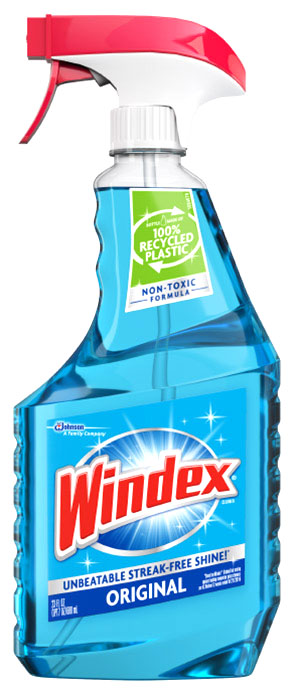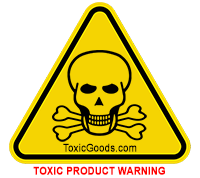Windex Original Glass Cleaner – Toxic Chemical Ingredients
Windex Original Glass Cleaner - Toxic Chemical Ingredients

Windex is a glass and hard-surface cleaner. Windex was invented by the Drackett Company in 1933 and has been marketed throughout the intervening decades. The original Windex was colored a light, translucent shade of blue. Today, there are varieties marketed in several colors (ocean fresh blue, sunshine lemon and citrus orange) and fragrances
Windex Original Glass Cleaner is a toxic for human consumption substance used for “working on dirt, grime, fingerprints and other messes” as claimed by the manufacturer. It contains precautionary label stating “Keep out of the reach of children and pets”. This is because unsupervised usage of this chemical substance can cause severe adverse health effects, including organ damage and death.
Toxic ingredients of Windex Original Glass Cleaner are as follows
- 2-hexoxyethanol
- Isopropanolamine
- Sodium dodecylbenzene sulfonate
- Lauramine oxide, ammonium hydroxide
- Fragrance
- Liquitint sky blue dye
- Bottle made from 100% recycled plastic
Toxic effects of Windex glass cleaner

Some of the toxic effects of Windex formulas are skin irritation, allergies, organ damage, acute aquatic toxicity, respiratory damage, tissue bio-degradation, cellular level poisoning, developmental/endocrine/reproductive effects, damage to vision.
Window cleaner poisoning occurs when someone swallows or breathes in large amounts of window cleaner. This can happen by accident or on purpose.
Cleaning ingredients vary in the type of health hazard they pose. Some cause acute, or immediate, hazards such as skin or respiratory irritation, watery eyes, or chemical burns, while others are associated with chronic, or long-term, effects such as cancer.
The smell of Windex is actually harmful to you and your family since the chemicals in many cleaning products contain the above listed volatile organic compounds. The indoor air is often five to ten times more contaminated that outdoor air, therefore utilization of this product is especially dangerous indoors. Although Windex seems to be a staple in most home cleaning arsenals, it is actually a highly toxic substance that should never be used, especially inside the home.
Using Windex regularly and often can cause chemicals to build in your organism, which can eventually lead to long-term health consequences. According to a new study, regular use of the window cleaner has an impact on lung health comparable with smoking a pack of cigarettes every day. The research followed more than 6,000 people over a 20 year period and found women, in particular, suffered significant health problems after long-term use of these products. Lung function decline in women working as cleaners or regularly using cleaning products at home was comparable to smoking 20 cigarettes a day over 10 to 20 years.
Additional Windex Toxicity Data
Hazards Identification: Inhalation. Skin contact. Eye contact.
Exposure Limits for 2-Butoxyethanol: OSHA (United States). TWA: 120 mg/m3, ACGIH (United States), TWA: 97 mg/m3.
Exposure Limits for Ethylene glycol hexyl ether Isopropyl Alcohol: OSHA (United States). TWA: 980 mg/m3. STEL: 1225 mg/m3. ACGIH (United States). TWA: 983 mg/m3. STEL: 1230 mg/m3
ORAL (LD50): Acute: 506 mg/kg [Rat]. DERMAL (LD50): Acute: 406 mg/kg [Rabbit]. VAPOR (LC50): Acute: 450 ppm 4 hour(s) [Rat]. Ethylene glycol hexyl ether 112-25-4 0.5-1.5 Not available. Not available. Isopropyl Alcohol 67-63-0 1-5 OSHA (United States). TWA: 980 mg/m3 STEL: 1225 mg/m3 ACGIH (United States). TWA: 983 mg/m3 STEL: 1230 mg/m. ORAL (LD50): Acute: 5045 mg/kg [Rat]. DERMAL (LD50): Acute: 12800 mg/kg [Rabbit]. VAPOR (LC50): Acute: 16000 ppm 8 hour(s) [Rat].

